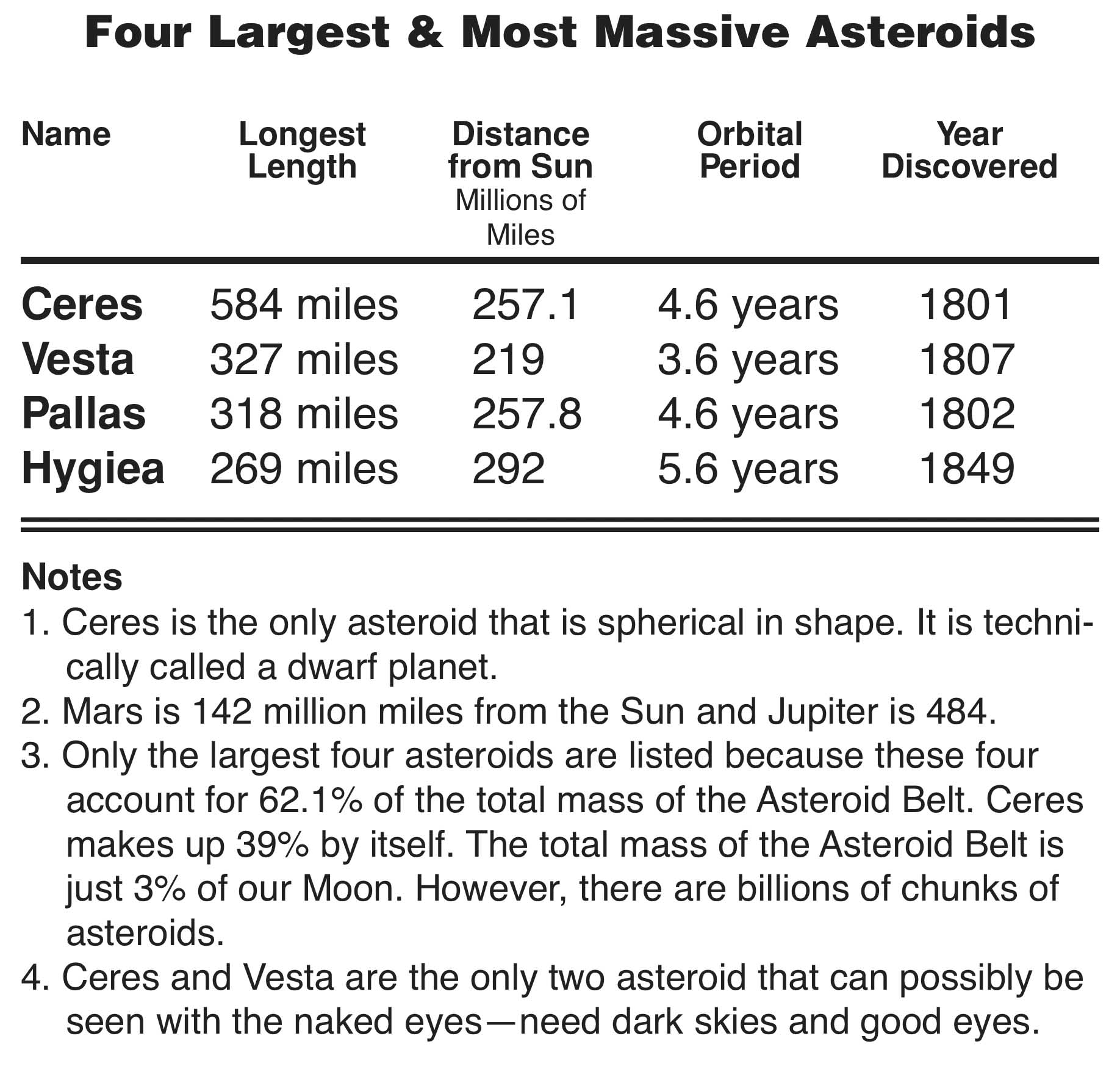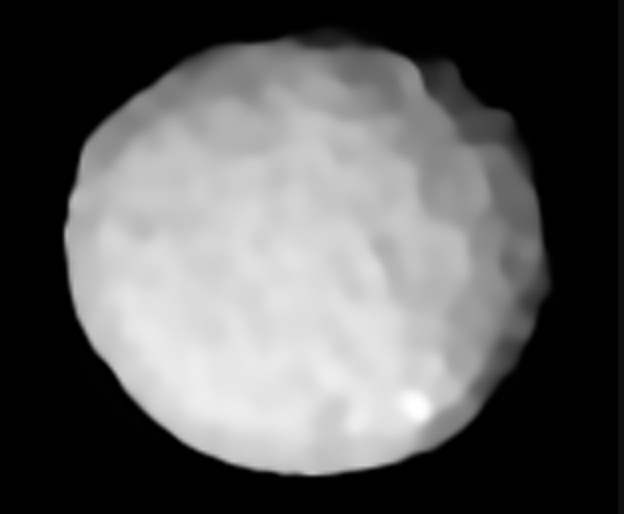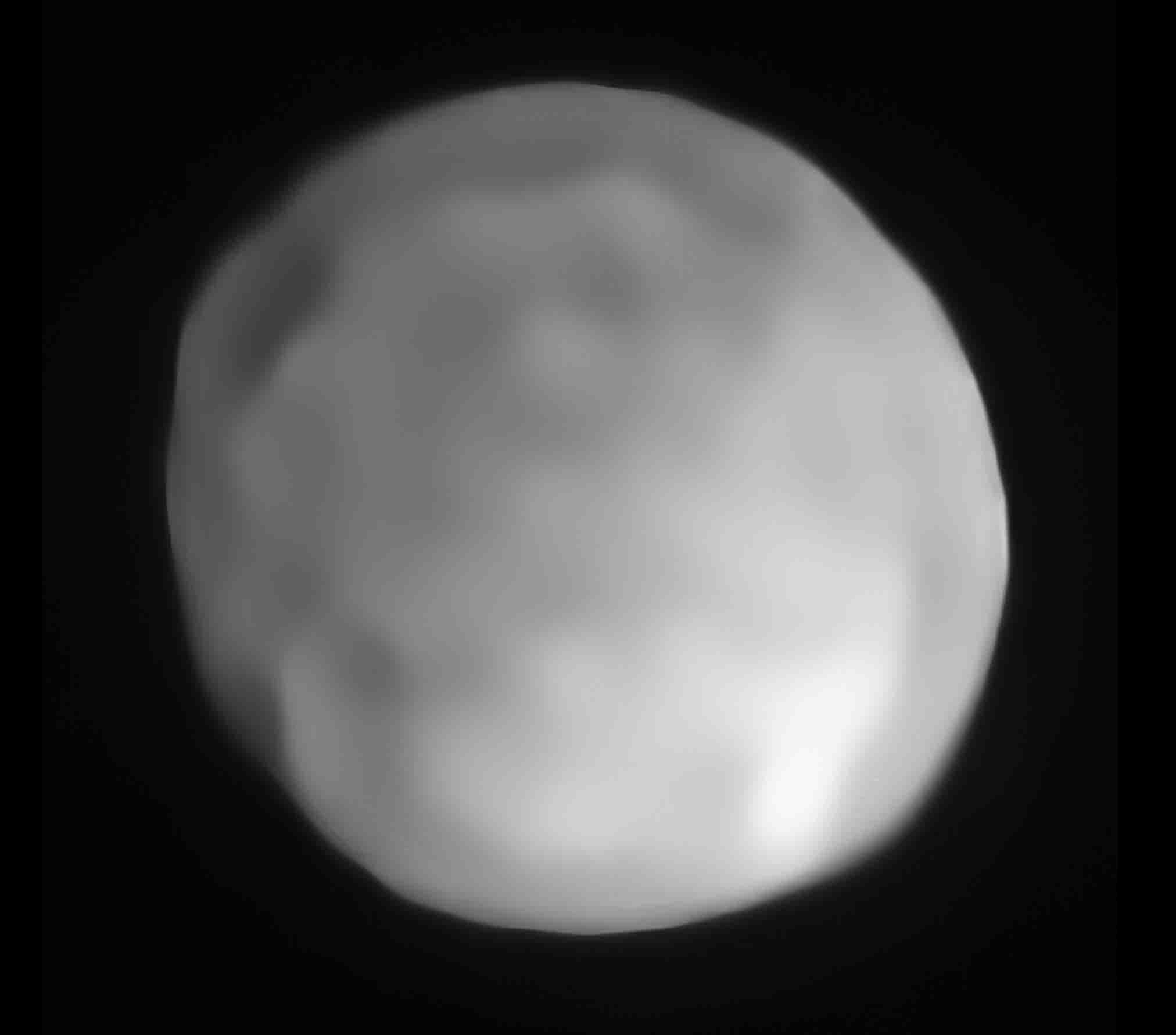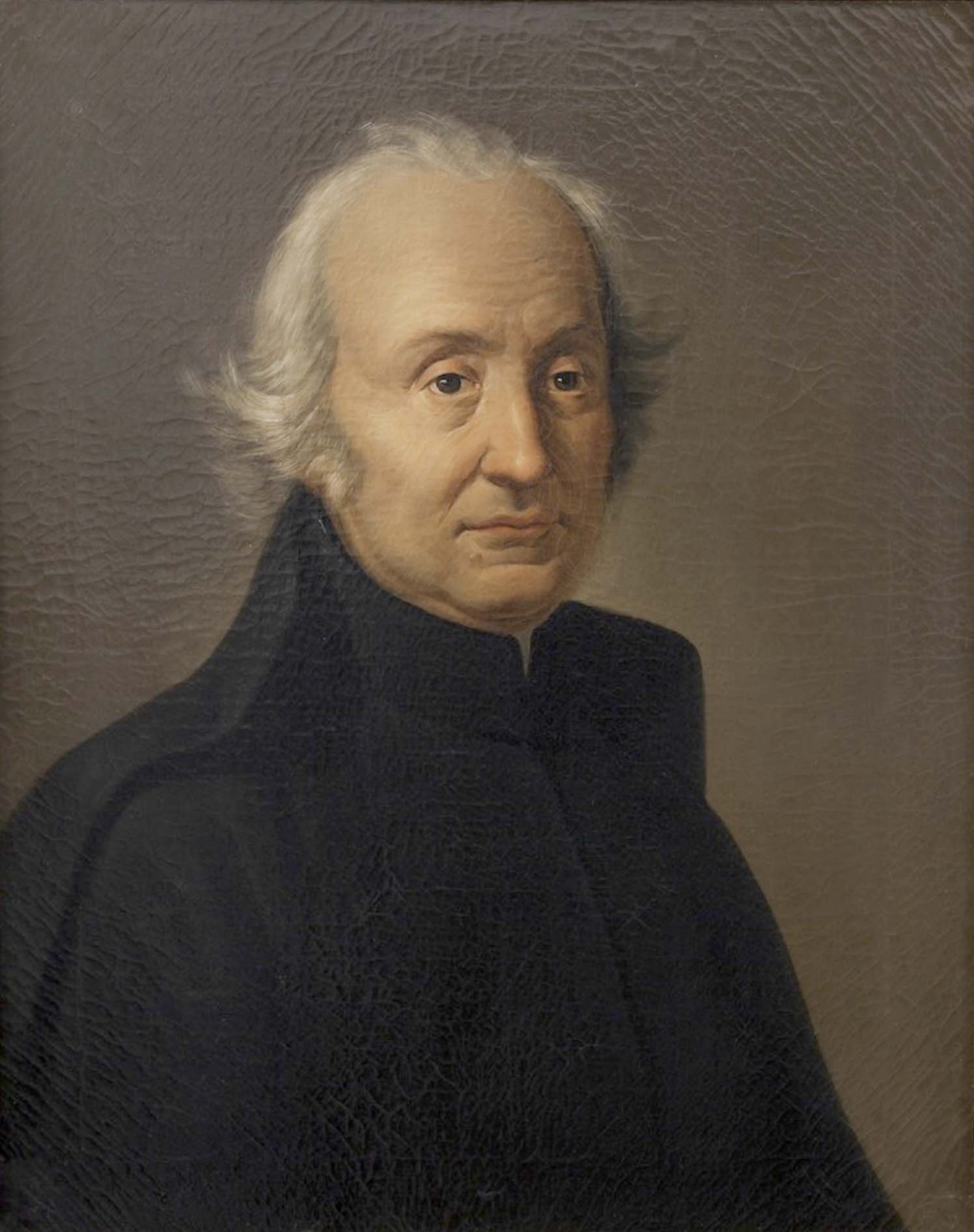Asteroids
Facts about the Asteroid Belt
• Ceres, the first asteriod discovered (in 1801 by the Italian astronomer Piazzi) is also the largest of the asteroids. It has a diameter of 584 miles and orbits the Sun every 4.6 years at a distance of 257 million miles. Ceres is the only spherical asteroid and is technically a dwarf planet.
Diameters: Range from a few feet to 584 miles in diameter. Total Mass of whole Asteroid Belt: 3% that of our Moon
Densities: 1.3 to 3.5 where water = 1
Gravity: Enough for a spacecraft to orbit the largest.
Albedos: Most reflect 4% to 30% of sunlight but some reflect as much as 70%.
Distances from Sun: Varies from 175 to 375 million miles Revolutions about Sun: Varies from 3.5 to 6.5 years
Atmospheres: None of the asteroids have atmospheres.
Moons: Some larger asteroids have small moons (other asteroids) orbiting them.
Observing with a small telescope: It is best to locate the position of the largest asteroids with a planetarium software program, then try to locate them with your telescope. They will appear star-like, just like the word “asteroid” implies.
Right. Vesta,the third largest asteroid with a length of 318 miles, as imaged by the spacecraft Dawn.

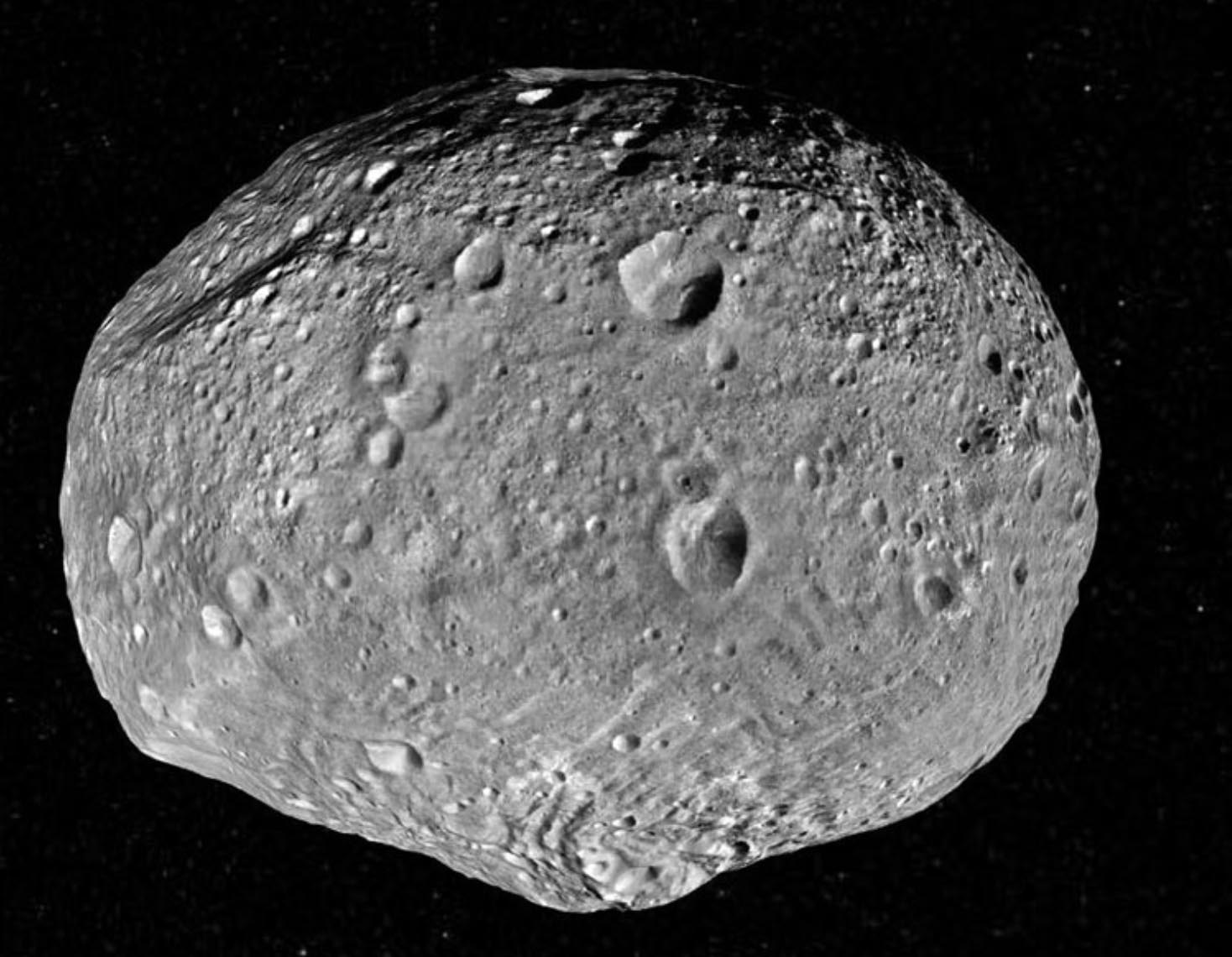
Photos of Ceres (top) and Vesta (bottom).
Both of these images were by spacecraft.
